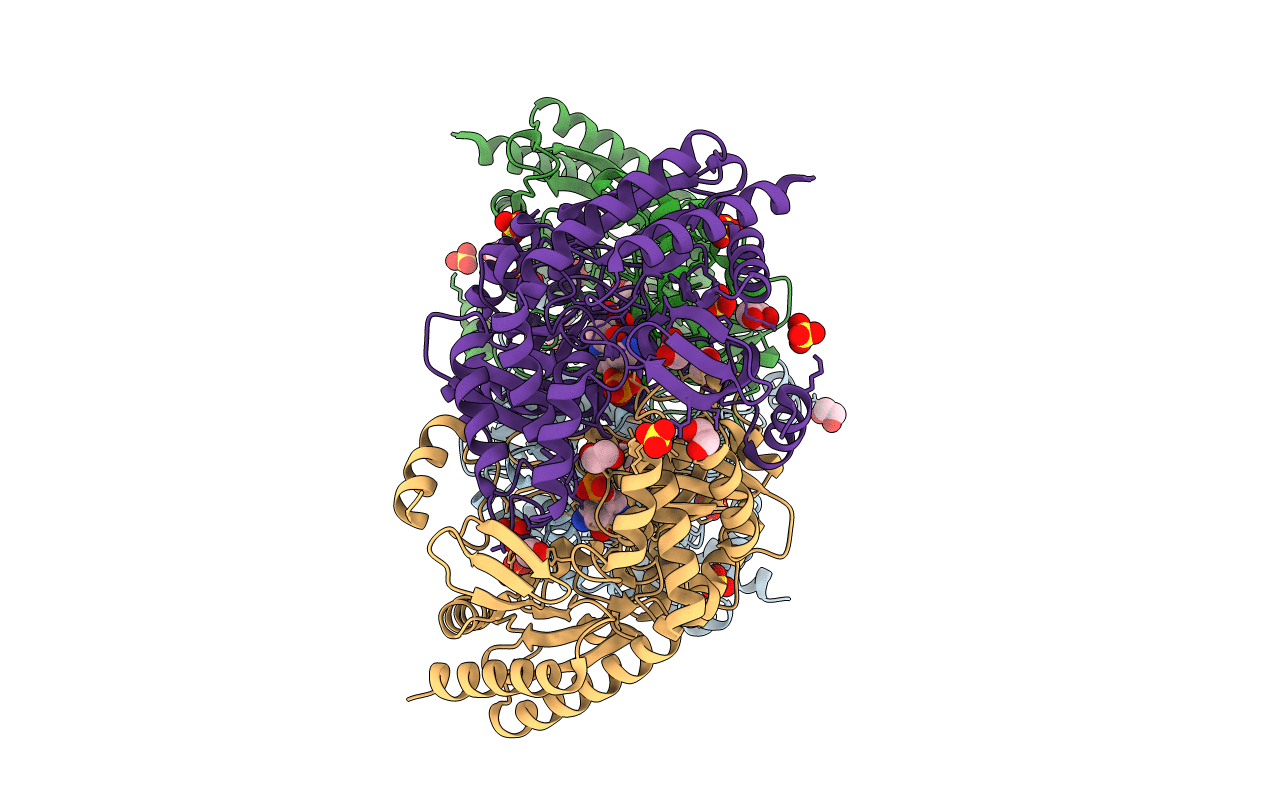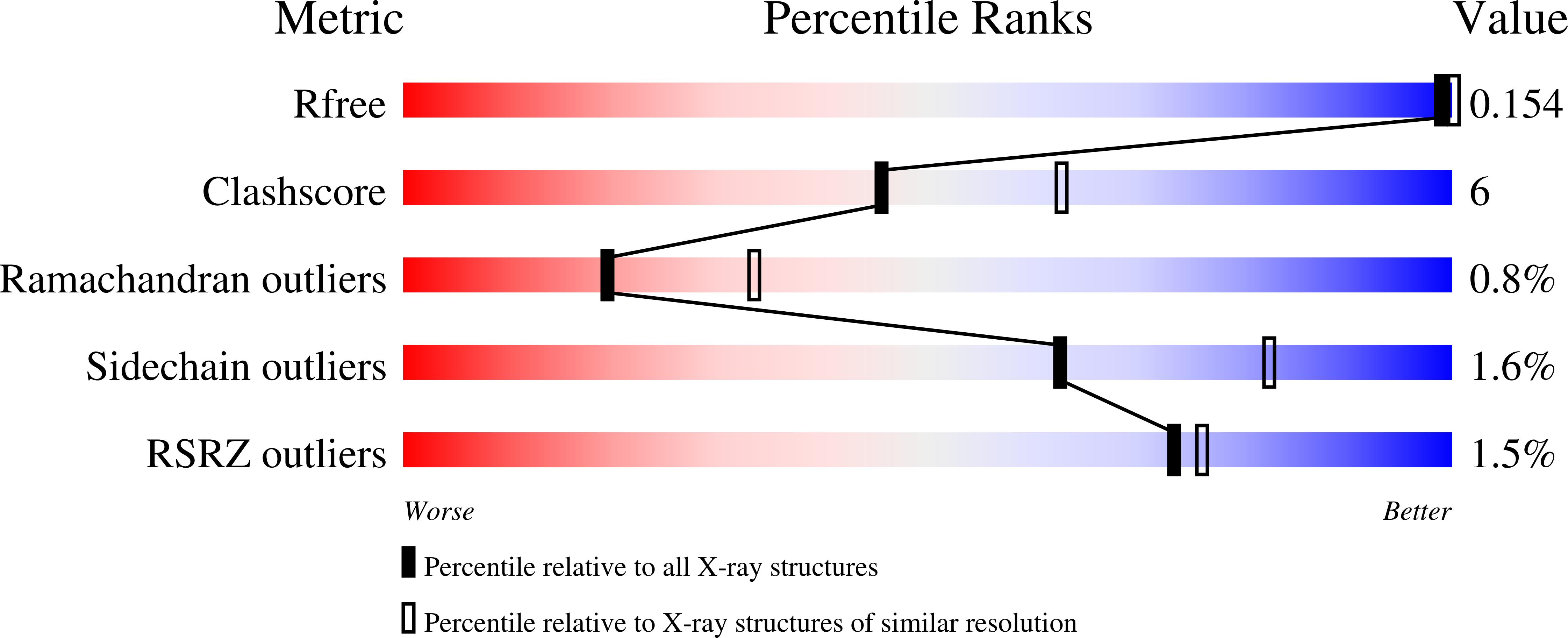
Deposition Date
2004-04-06
Release Date
2005-03-01
Last Version Date
2021-10-27
Entry Detail
PDB ID:
1SZU
Keywords:
Title:
The structure of gamma-aminobutyrate aminotransferase mutant: V241A
Biological Source:
Source Organism:
Escherichia coli (Taxon ID: 562)
Host Organism:
Method Details:
Experimental Method:
Resolution:
2.52 Å
R-Value Free:
0.20
R-Value Work:
0.15
R-Value Observed:
0.15
Space Group:
P 32 2 1


